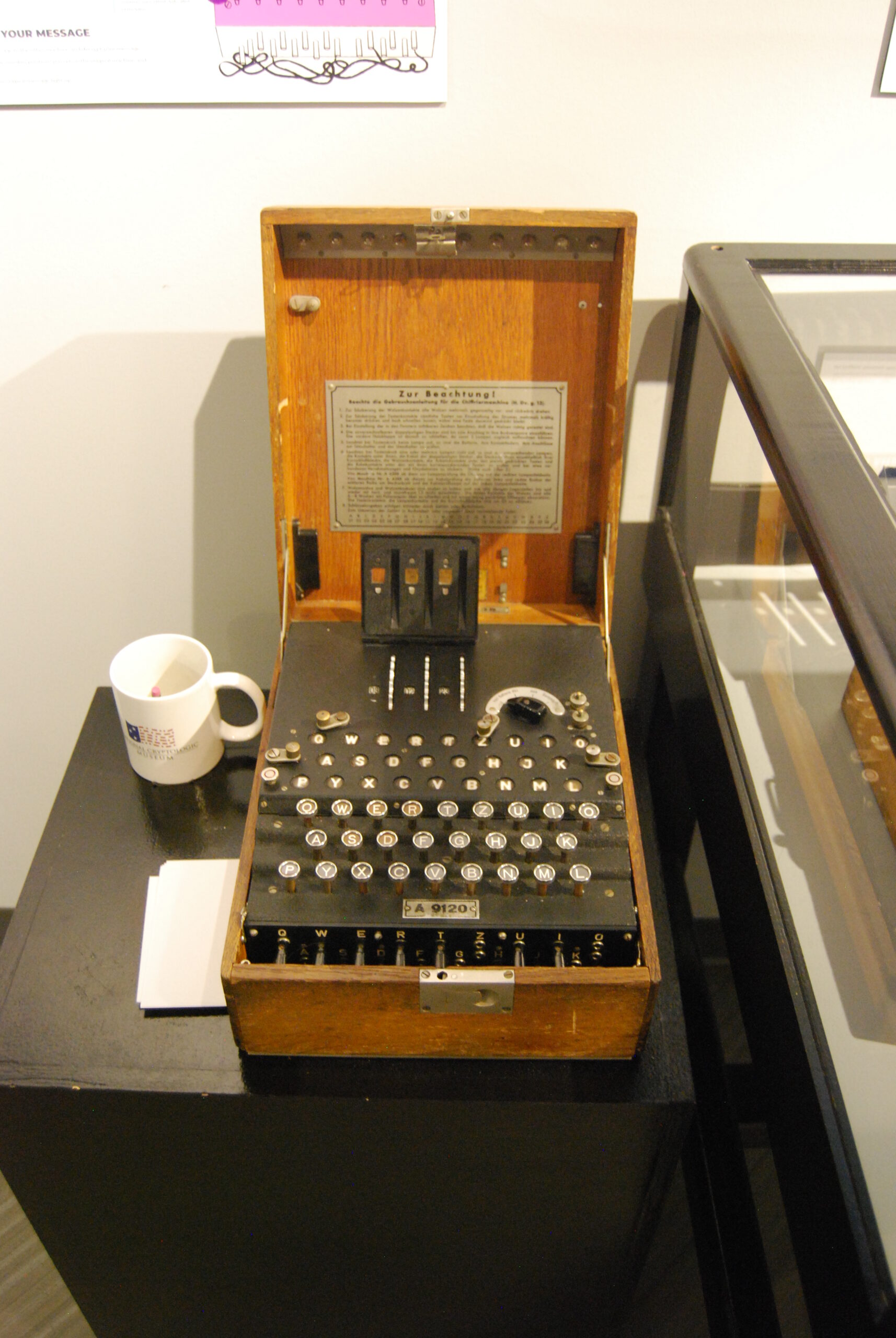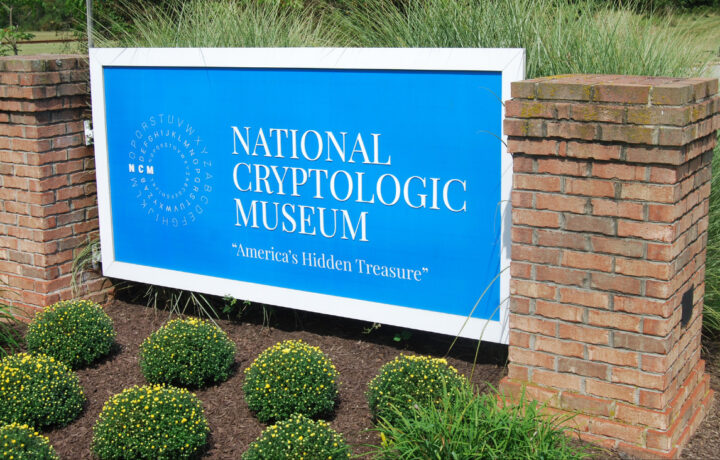The National Security Agency (NSA) could probably be best described as something of a paradox. Founded nearly 71 years ago, its existence wasn’t even revealed until 1975, even as it became the largest of the U.S. intelligence organizations in terms of personnel and budget during the Cold War. Its headquarters is located in a fairly non-descript office tower at Fort Meade, Maryland – akin to it hiding in very plain sight.
Even today, many Americans likely don’t fully understand what the NSA even does.
Simply put, it is responsible for global monitoring, collection, and processing of information and data for foreign and domestic intelligence and counterintelligence purposes. The agency specializes in a discipline known as signals intelligence (SIGINT). Though it was formed by President Harry S. Truman in November 1952, its origins date back to the role the U.S. military played in deciphering coded communications during the Second World War.
The NSA’s origins and its role within the government is just part of the mission of the National Cryptologic Museum (NCM), which serves as the agency’s gateway to the public. The NCM is also the only public museum in the U.S. Intelligence Community (IC) – and it can be visited for free daily Tuesday to Saturday with no reservation required.
The museum facility was first open to the public on December 16, 1993 – and it currently hosts some 70,000 visitors annually.
From Motel to Museum
Though many of the more famous museums that surround the nation’s capital are housed in either historic or specially-built facilities, NCM is actually located in the former Colony Seven Motel. On the surface, it does seem to be an odd location for such a motel.
In fact, The Baltimore Sun newspaper questioned in March 1994 that it may never have likely known if the motel, located off the Baltimore-Washington Parkway, was actually used by spies trying to eavesdrop on the NSA.
However, Dr. Vince Houghton, who was named director of the museum in November 2020, dismissed such rumors. He told ClearanceJobs the Colony Seven was just where those who were interviewing to work at the NSA or had business with the agency typically stayed. It is far from the image of Soviet spies with sophisticated equipment trying to gather U.S. secrets – yet, it was actually the NSA that was doing the listening.
Yet, the motel was still purchased with taxpayer dollars when it was offered for sale. That was to create a buffer zone between the high security main buildings at the NSA and the adjacent highway.
The New Museum
Just prior to the pandemic, the NCM was closed for major renovations, and it only reopened last October. Visitors who had been to the museum previously may note that it has far fewer items on display.
But that was entirely by design.
“We made good use of the time to go through the collection, and archive what we actually owned,” explained Houghton, who previously served as curator and historian of the International Spy Museum in Washington, D.C. “What you will see today is far more significant. This is no longer a collection of stuff. Instead, the items on display now are because they were the first of something, the only one in existence, or were used by someone of historic note.”
As a result, every one of the items played a significant role in the nation’s cryptologic history. That right-sizing of the collection in many ways mirrors the role of the NSA.
“It is like pulling signals out of the noise,” Houghton added. “Instead of cases of artifacts, we designed this to be a history museum that was displayed like an art museum.”
Truly Significant Items
When the NCM first opened, it chronicled the development of codes from the Middle Ages to the Cray high-speed computer that contained some 45 miles of wires. One of the displays that visitors could previously see was dedicated to the now infamous “Zimmerman Telegram” that was sent from Germany to Mexico – and which directly led to the U.S. entry into the First World War.
“It was historically significant, but we didn’t decipher the Zimmerman Telegram, the British did,” said Houghton, on why it is no longer among the items being displayed.
Instead, the collection still has artifacts that date back to pre-American Revolutionary War times, but everything is related to American code-breaking or cryptographic efforts. That does include a “Polygraphia,” a 1518-dated manuscript by German monk Johannes Trithemius, and which is considered the first book about cryptography. In addition there is a letter from French Emperor Napoleon Bonaparte to his son, Prince Eugene, instructing him how to write letters in code. Those are items that help teach today’s NSA recruits the importance and origins of codes and cryptography.
Don’t Expect a Spy Museum
The NCM also doesn’t have James Bond-style gizmos or gadgets – and such items can be seen at the International Spy Museum in Washington, D.C. Rather, this museum has a number of more mundane yet still significant items such as a red mobile telephone that was used by former President Ronald Reagan. It wasn’t, however, a hotline to Moscow.
Rather it was in one of the Gipper’s limousines.
Likewise, the museum doesn’t have a collection of secret agent communications, but it does have a number of President Barack Obama’s mobile phones including a number of his beloved Blackberry mobiles that the NSA equipped with better security. Other items now on display include the “biscuits” – the sealed contained cards that are locked in submarines and missile silos that are used to launch nuclear weapons!
Quite the Enigma and More!

Then there are the two Enigma machines that are networked and which visitors can use to send messages in code and then decipher! These are likely the only operational Enigma machines that can be used by the public today.
“This was important for us to make the history of the Enigma accessible,” said Houghton.
It isn’t just the machines that might impress. The NCM also has part of the Bombe on display – the machine that was first developed by the British to break the German Enigma codes. It is one the final of 121 Bombes built for the U.S. military, and it was used to crack the German codes, greatly impacting the outcome of the war.
The Purple Cipher and SIGABA
Another of the standout items in the collection is a remnant of the Japanese purple cipher from the bombed-out Japanese embassy in Berlin, Germany. Though no full units survived the war, the museum has one of the only intact parts from the machine.
Based on the rotor technology of Enigma, it was officially dubbed the “97-shiki O-bun In-ji-ki,” which translates to Alphabetical Typewriter ’97 (the Japanese year 2597 or 1937 in the Western calendar). Purple, the codename given to the Japan’s diplomatic cipher, proved to be a huge challenge to U.S. Army cryptanalysts. It took 18 months for the men and women of the Signal Intelligence Service (SIS) to study the messages to determine how to break the code. This included developing a machine that incorporated telephone stepping switches to mimic the Purple machine’s complex scrambling pattern. It proved successful, and there are still stories of how the U.S. was able to read the signals before the Japanese!
Spymasters in Germany had good evidence that the U.S. had cracked the Japanese code, but Tokyo refused to believe the code could be broken. It wasn’t until after Congressional hearings that looked into Pearl Harbor that Japanese officials believed their code had been compromised.
SIGABA and Russian Fish
Clearly, the U.S. and its allies knew that better encryption was required as noted by the 20-rotor cipher machine known as SIGABA, or ECM Mark II that is now display. It was used by President Franklin Roosevelt to communicate with British Prime Minister Winston Churchill during the war. There was reportedly no successful cryptanalysis of the machine during its service lifetime.
The museum also has the largely unknown “Russian Fish,” which was a machine that the Nazis built to listen to Soviet communications on the Eastern front during World War II. Instead of encrypting all their messages, the Soviets devised a way to split the communications into nine channels. The Germans monitoring the channels would only hear static, until the Russian Fish was developed, allowing all the channels to be put back together. The device was buried at the end of the war, and discovered by U.S. troops who returned it to America.
That machine proved especially useful in the late 1940s after the Soviets changed their codes on October 29, 1948 – a day known as “Black Friday.” However, the Soviets still communicated with the same technology. This fact was among the secrets of the Cold War that were largely unknown to most Americans until recently.
It is among the items that makes a visit to the NCM a must for anyone with an interest in learning a bit more about the secrets of secret communications.




